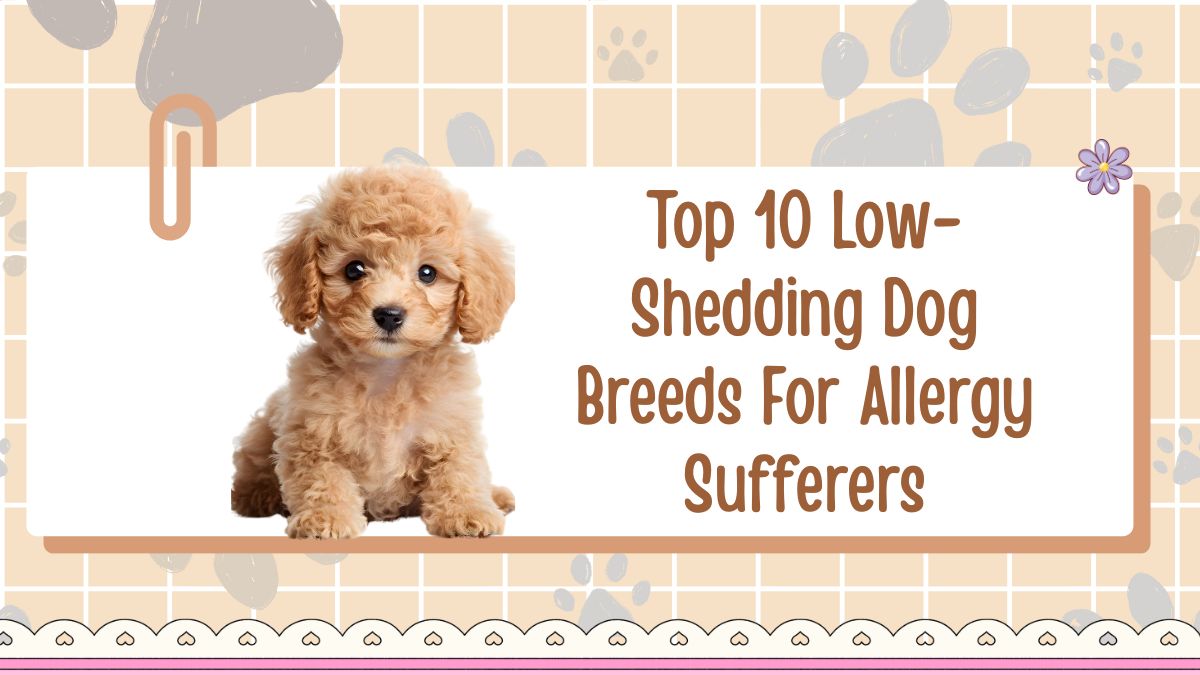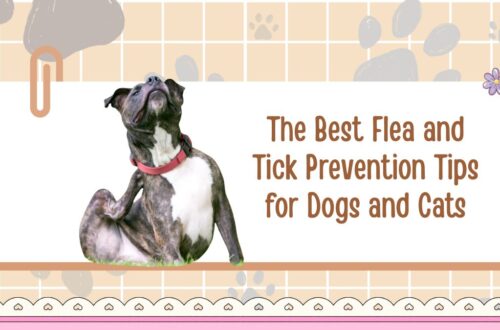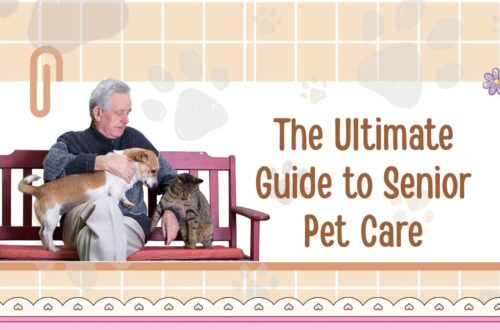For many pet lovers, dog allergies can feel like a heartbreaking barrier to enjoying canine companionship.
However, thanks to selective breeding and greater awareness, there are now several low-shedding dog breeds that make it possible to share your home with a pup without constant sneezing and watery eyes.
While no dog is truly hypoallergenic, some breeds produce less dander and shed less hair, making them far more suitable for individuals with mild to moderate allergies.
In this detailed guide, we’ll explore the top 10 low-shedding breeds, their unique characteristics, grooming needs, and why they make excellent companions for allergy sufferers.
Why Do Some Dogs Trigger Allergies?
Dog allergies are not caused by fur itself but by dander—tiny flakes of dead skin, saliva, and urine proteins that attach to fur and circulate in the air.
When dogs shed heavily, these particles spread throughout your home, aggravating symptoms.
Low-shedding breeds have coats that trap loose hair and dander instead of releasing it into the air. Paired with regular grooming and cleaning routines, these dogs can help keep allergic reactions to a minimum.
Understanding Low-Shedding Breeds
| Term | Meaning |
|---|---|
| Minimal Shedding | Dog loses very little fur compared to most breeds. |
| Single Coat | One layer of fur—less shedding and dander. |
| Curly/Wool Coat | Curls trap loose hairs, preventing allergens from spreading. |
| Low Dander | Naturally produces fewer allergens. |
Even with low-shedding dogs, consistent grooming and cleaning remain essential to maintaining an allergy-friendly home.
Top 10 Low-Shedding Dog Breeds for Allergy Sufferers
| Breed | Size | Coat Type | Why It’s Great for Allergy Sufferers |
|---|---|---|---|
| 1. Poodle (Toy, Miniature, Standard) | Small to large (10–70 lbs) | Curly, dense coat | One of the most popular low-shedding dogs; excellent for allergy-sensitive homes. |
| 2. Bichon Frise | Small (10–18 lbs) | Soft, curly coat | Produces minimal dander; easy to maintain with regular grooming. |
| 3. Portuguese Water Dog | Medium (35–60 lbs) | Wavy or curly coat | Energetic and affectionate; sheds very little. |
| 4. Lagotto Romagnolo | Medium (24–35 lbs) | Woolly, tight curls | Rare breed with a thick, non-shedding coat. |
| 5. Soft-Coated Wheaten Terrier | Medium (30–40 lbs) | Silky, single-layer coat | Friendly terrier that doesn’t shed excessively. |
| 6. Kerry Blue Terrier | Medium (33–40 lbs) | Wavy, non-shedding coat | Loyal and hypoallergenic with minimal grooming needs. |
| 7. Irish Water Spaniel | Large (55–65 lbs) | Dense, curly coat | Low dander and hair loss; known for intelligence. |
| 8. Chinese Crested | Small (10–13 lbs) | Hairless or minimal hair | Almost no shedding, easy to groom; ideal for allergy-prone individuals. |
| 9. Maltese | Small (7–14 lbs) | Long, silky coat | Low dander; hair behaves like human hair, reducing allergens. |
| 10. Yorkshire Terrier (Yorkie) | Small (7–8 lbs) | Fine, hair-like coat | Minimal shedding; adaptable and affectionate lap dog. |
How to Choose the Right Low-Shedding Dog
When selecting a dog, consider more than just shedding levels:
- Test your sensitivity – Spend time with the breed before adoption to gauge allergic response.
- Check coat type and maintenance – Many low-shedding dogs require frequent brushing and professional grooming.
- Consider lifestyle and space – Some breeds (like the Portuguese Water Dog) are very active and need room to play.
- Understand grooming needs – Curly or long-haired dogs need regular trims to prevent matting.
- Budget for upkeep – Low-shedding often means higher grooming costs.
Benefits of Owning a Low-Shedding Dog
- Cleaner home environment – Less hair on furniture and clothes.
- Fewer allergic reactions – Lower dander levels in the air.
- Better companionship – You can enjoy the benefits of pet ownership without discomfort.
- Improved mental well-being – Pets reduce stress and improve happiness for allergy sufferers who can safely keep them.
Grooming and Maintenance Tips
To keep allergens under control, follow these best practices:
- Brush regularly (2–3 times a week) to remove loose fur.
- Bathe your dog every 3–4 weeks using a mild dog shampoo.
- Use HEPA filters in your home to capture airborne dander.
- Vacuum and clean frequently, especially carpets and bedding.
- Wipe your dog’s coat and paws after walks to remove pollen and dust.
- Visit a professional groomer every 4–6 weeks for clipping and maintenance.
A consistent grooming schedule is key to keeping your home allergen-free and your dog’s coat healthy.
Lifestyle and Environment Adjustments
Owning a low-shedding dog is only part of the equation. To truly minimize allergic reactions:
- Keep your pet out of bedrooms and upholstered furniture.
- Wash your bedding, dog toys, and blankets weekly.
- Install air purifiers in commonly used rooms.
- Maintain a balanced diet for your dog to reduce skin irritation and dander.
- Consider regular veterinary check-ups to ensure healthy skin and coat condition.
Myths About Hypoallergenic Dogs
- Myth #1: Hypoallergenic dogs don’t cause allergies.
- Reality: All dogs produce allergens, but low-shedding breeds release fewer into the air.
- Myth #2: Short-haired dogs are better for allergies.
- Reality: Coat type matters more than length. Some short-haired breeds shed heavily.
- Myth #3: Grooming reduces all allergens.
- Reality: Grooming helps but doesn’t eliminate allergens completely. Consistent care is necessary.
Real-World Experience: What Owners Say
Owners of low-shedding breeds often report cleaner homes, fewer allergy flare-ups, and easier maintenance.
Families with mild allergies frequently find success with breeds like the Bichon Frise, Poodle, and Maltese, noting that regular grooming and cleaning make a big difference.
However, every person’s allergy threshold is different. Spending time with a specific dog before committing to ownership is the best way to ensure compatibility.
Avoid These Breeds if You Have Allergies
While lovable, the following breeds are not ideal for allergy sufferers due to high shedding and dander:
- Labrador Retriever
- German Shepherd
- Golden Retriever
- Siberian Husky
- Akita
These breeds release significant allergens and require frequent cleaning to manage hair and dander buildup.
Key Takeaways
| Factor | Recommendation |
|---|---|
| Allergy Trigger | Dander and saliva proteins, not fur length. |
| Best Coat Type | Curly, single-layer, or hair-like coats. |
| Maintenance | Regular grooming and cleaning required. |
| Environmental Care | Use HEPA filters and limit indoor shedding. |
| Breed Choice | Test individual dogs before adoption. |
Allergies shouldn’t stop you from enjoying the joy of having a dog. With proper care, grooming, and a carefully chosen breed, you can live comfortably with a furry companion.
The Poodle, Bichon Frise, Maltese, and Portuguese Water Dog are among the most allergy-friendly breeds, offering love, loyalty, and minimal shedding.
Remember, low-shedding does not mean low-maintenance—these breeds still need regular grooming and attention to stay healthy and allergen-free.
Combine good pet hygiene with home cleaning habits, and you’ll discover that even allergy sufferers can live happily with man’s best friend.
FAQs
No dog is 100% hypoallergenic. Some breeds simply shed less and produce fewer allergens than others.
The Poodle, Maltese, and Bichon Frise are top choices due to their curly or hair-like coats and low dander levels.
Regular grooming, frequent cleaning, using air purifiers, and limiting access to bedrooms can significantly reduce allergic reactions.




